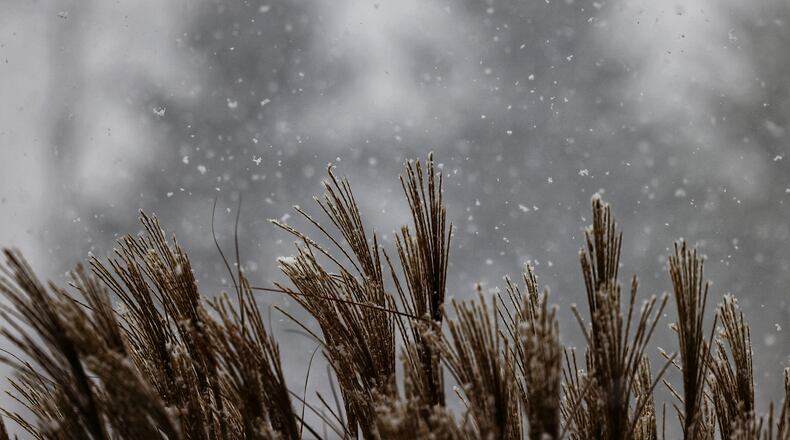Meteorologists said that they don’t expect much of the snow to accumulate, if any does at all.
Otherwise, the NWS predicted a comparatively mild weekend, with highs around 60 degrees on Saturday under mostly sunny skies, and rain starting late Saturday night with lows around 40 degrees.
Sunday is expected to by chilly during the day with mostly cloudy skies, a high in the upper 40s and a chance of showers, before temperatures plunge overnight.
The snowflakes are arriving a little bit on the early side for winter, meteorologists said, though still within a normal time period.
While it is hard to say an exact time when the first snows usually fall, we typically start to see flakes by mid- to late November, they said.
The average date of the first measurable snowfall in Dayton is late in November, NWS statistics showed, though the average date for us to receive an inch or more isn’t until early December.
The earliest we have historically seen measurable snowfall in Dayton, was Oct. 18, 1989, when 0.2 inches were measured, according to NWS statistics. This was only the start, though, as next day saw 4.8 inches of snowfall.
The freak snowstorm created havoc, as falling snow and ice accumulated on leaves that hadn’t fallen off trees, causing tens of thousands of power outages, with as many as 20,000 in Dayton and up to 100,000 in Cincinnati, according to Dayton Daily News coverage in 1989.
The cleanup effort involved removing every tree limb before restoring power, slowing recovery efforts and leading to the Red Cross opening temporary shelters in Dayton and Englewood, this publication reported.
About the Author

